Existing User Log In
New User Registration
Register for a free account to gain full access to the VGChartz Network and join our thriving community.



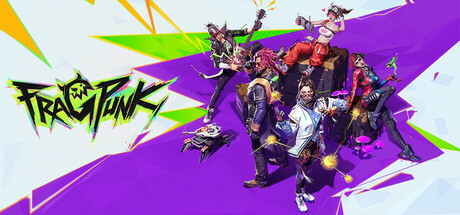

America - Front
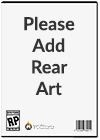

America - Back

Bad Guitar Studio
Shooter
 (Add Date)
(Add Date) (Add Date)
(Add Date) (Add Date)
(Add Date)
| Owners: | 0 |
| Favorite: | 0 |
| Tracked: | 0 |
| Wishlist: | 0 |
| Now Playing: | 0 |
Before any prep phase clock winds down, any shots are fired, or hero character quips are said, each standard round of FragPunk begins with several randomized cards spat out of an ugly deck box. The game's systems are essentially opening a new six-card pack every time and splitting the contents between both teams. This being a(nother) first-person heroshooter instead of a CCG means that the metaphorical table is a multiplayer arena, subject to being altered by whichever modifiers your squad selects. One round your team's available options are routine damage multiplier buffs, the next each team member gets a feral hog companion that's capable of knocking over an opponent.
Bad Guitar Studio wants you to frame each of these CCG cards as a per-round mod, whether it's a damage slider or something zanier. Essentially, these "rules" are meant to be – temporarily – broken. Dislike how its default movement model foregoes modern staples like crouch-sliding after running? Well, maybe you'll get the opportunity to cover the map in ice. Almost every presupposed fixity associated with competitive shooters – match length, number of objective sites, etc. – can potentially be altered. Of course, the effervescence of using "codified cheats" can't also help but remind us of how commonplace these standards are today.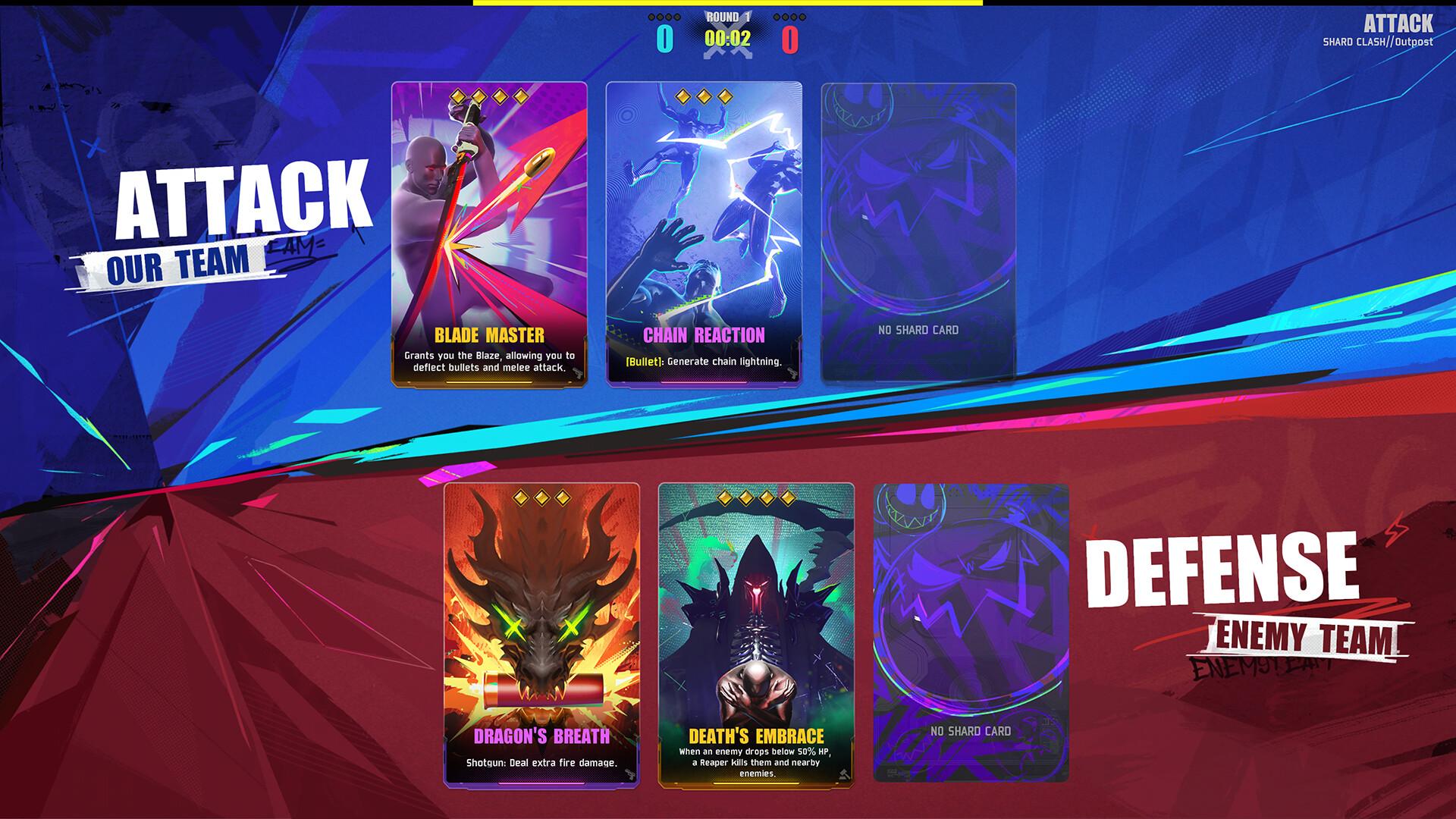
The aforementioned standard 5v5 mode, Shard Clash, follows the same routine you've seen from Counter-Strike to Valorant: attackers try to plant the Converter at Objective A or B before the clock strikes 0:00, while defenders try to prevent that from happening. It's a best-of-seven format, so teams swap positions after the third round. Should the score be tied after six rounds, the format then transitions to 1v1 dueling, until one side runs out of fighters. Rather than being like penalty kicks, said round winner hops directly into the next duel; in essence, they're likely at an inherent disadvantage by now having a lower health pool and/or less of their character's utility on hand.
As with selecting Shard Cards, it's an interesting nuance that can influence which hero character fits best with your playstyle for the given scenario. Of the available launch roster, and if you've signed up for the membership (more on that later), each one has its useful strengths. Most options run the gamut of unsurprising archetypes: cloaked assassin in a stealth suit, robot with a few humorous touches to its personality, and so on and so forth. There are a few surprise alien races here emulating a couple of other franchises – like Elder Scrolls' Argonian or Mass Effect's Asari – but that's about it. Perhaps some players may not care for the typical range of human female characters, sacrificing distinctive silhouettes for standardized sexiness; then again, Bad Guitar and NetEase probably want their live-service title to stay alive longer than two weeks.

The greater disparity comes from hero abilities, alongside those randomized cards; of course, not all are created equal. Forcing your enemies to play a round in Big Head Mode has a higher Shard Point minimum than, say, exposing all enemies in your immediate line of sight. The means of acquiring more points for yourself, or the teammate optionally designated as your Shard Bank, comes down to either acquiring them as pick-ups or accumulating fractions for basic activities: 0.1 shards for an assist, 0.2 for a kill, 0.5 for defusing a bomb, and so on. So, every round begins as this fun micro-dilemma over which cards to bank on (if any), whether to spend a point to swap for another random card, or save everything to spend big later.
Of course, melding game design with randomness won't always feel fair – it's simply unavoidable. For example: one of the most aggravating cards for defenders is attackers being able to plant the Converter anywhere, but the defuse timer is now 90 seconds instead of 50. Naturally, attackers want to immediately plant this back at their spawn point and have defenders come to them. If you consider this alongside other potential buffs, the map's funneled layout at spawn points, and the mental uphill battle of turning attack/defense dynamics on their head, it's essentially a wash for defense against a competent team. Oh, don't worry! The worst offenders have been eliminated from ranked and – for some reason – only higher-ranked lobbies have the choice to ban other obnoxious options.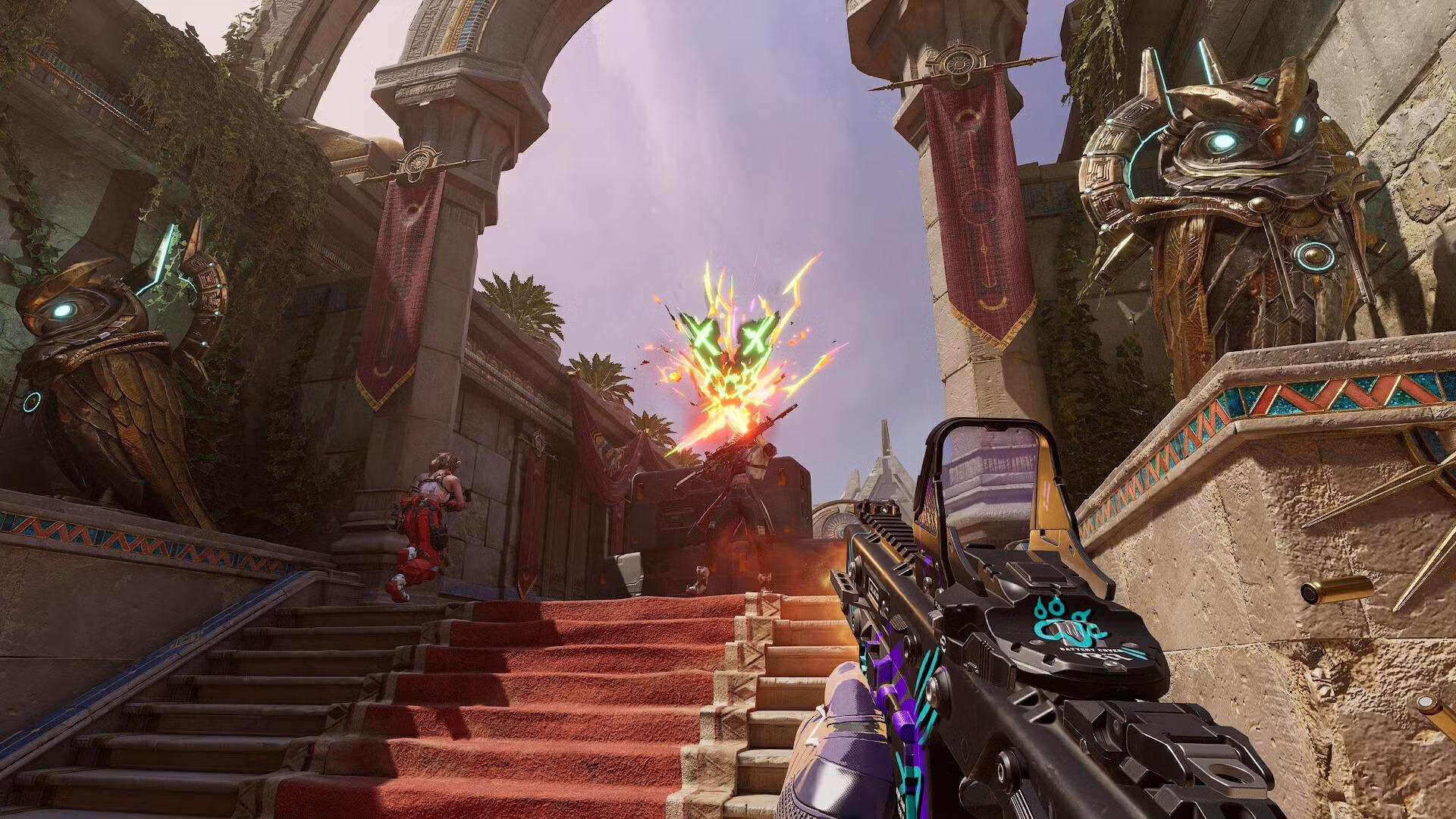
I can't help but spot the irony of how Shard Cards are less aggravating in the ancillary modes that come and go in timed rotations. In the likes of Team Deathmatch or Free-For-All, both various cards and your hero's abilities are one of three total options you can place in your deck. It's a great give-n-take because now you're wrestling between faster reloading speed for one minute or a superpower you've been so accustomed to using. Conversely, the other permanent option (currently) next to Standard & Ranked Shard Clash is its version of Halo's Infected Mode: Outbreak. Even though Survivor- & Infected-exclusive Shard Cards are a great concept, the overall execution is fundamentally lacking. The bullet-sponginess and quick respawns for zombies feels off, most hero abilities don't really do much to counter them, and rounds feel interminable thanks to people finding strange exploits to hide out of bounds. Just a disappointing misfire all around.
Fortunately, the basic fundamentals of shooting and map design act as a countervailing weight to FragPunk's zanier exploits. The arsenal is (currently) all about a standard military collection, with primary options spread across six categories: shotgun, assault rifle, sniper, and so on. The two options within each group don't often have many differences, typically limited to visual design and some stats. There's a greater variety in your secondary, where certain pistols come equipped with a mini-explosive or flashbang launcher. None of the maps really rock the boat either; there's a metropolis theme, temple theme, another temple theme, you get the picture. There's not much personality between them, but they're interested in function over form; in that regard, the various secondary routes within these three-lane maps give a nice push/pull for both sides.
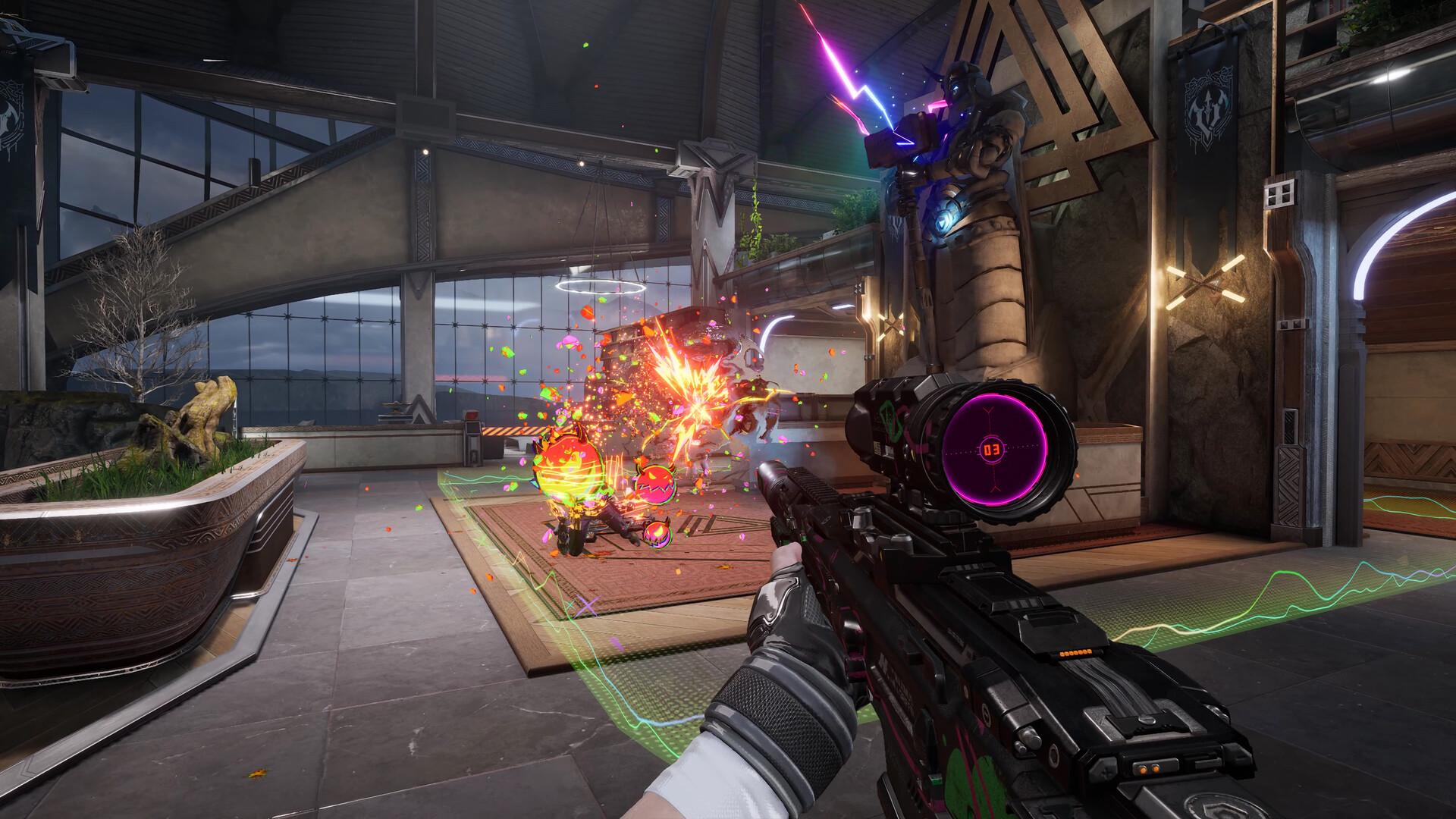
Of course, if you've already checked out of playing more hero shooters – regardless of how taut the controls or how kooky the cards are – these aesthetics certainly won’t convince you otherwise. Maybe I'm reading too much into this, but everything about its visual & aural design feels like Chinese executives discovering "cool" as a concept: radioactive green & light purple color scheme, background rock music you'd likely hear in FYE at the mall, anime affectations, constant sarcastic sound bites from heroes, and so on. It certainly demands attention, and at least owns an identity compared to Ubisoft's tonally-confused XDefiant, but it's just too much.
Garish color schemes don't help with stuffed menus either. Hell, before even reaching the tutorial, my account's mail folder was filled to the gills with little notifications and empty trinkets. It's incredibly tough for F2P titles to strike a balance between the game proper and storefront shenanigans. In FragPunk's case, the latter can't help but muddy up the former. Between more disparate currencies than a central bank to copious monetization gates that'd even make EA blush, it's an overwhelming jumble. Even the simpler approach of a monthly or yearly membership comes with a few conditions:
The monthly membership (which I did receive via review code) comes with a few other goodies, and it may not cost much ($9.90), but it's emblematic of a chaotic storefront trying to flood you with constant micro-dopamine hits and gated-off treats.
From the cards that drive its gameplay to the storefront schemes that maintain its servers, FragPunk is a chaotic specimen by nature. To its credit, that's a great way to get a foot in the door within such a saturated market. Whether or not it keeps that interest is more uncertain. Because, sure, the shooting foundation, round time, etc. are geared towards high-intensity shootouts that can capture a certain high. But once that momentum slows down, as you navigate away from the game modes, Bad Guitar's Corporatized Anarchy™ aesthetic makes you realize: order shouldn't get such a bad rap.
Contractor by trade and writer by hobby, Lee's obnoxious criticisms have found a way to be featured across several gaming sites: N4G, VGChartz, Gaming Nexus, DarkStation, and TechRaptor! He started gaming in the mid-90s and has had the privilege in playing many games across a plethora of platforms. Reader warning: each click given to his articles only helps to inflate his Texas-sized ego. Proceed with caution.









